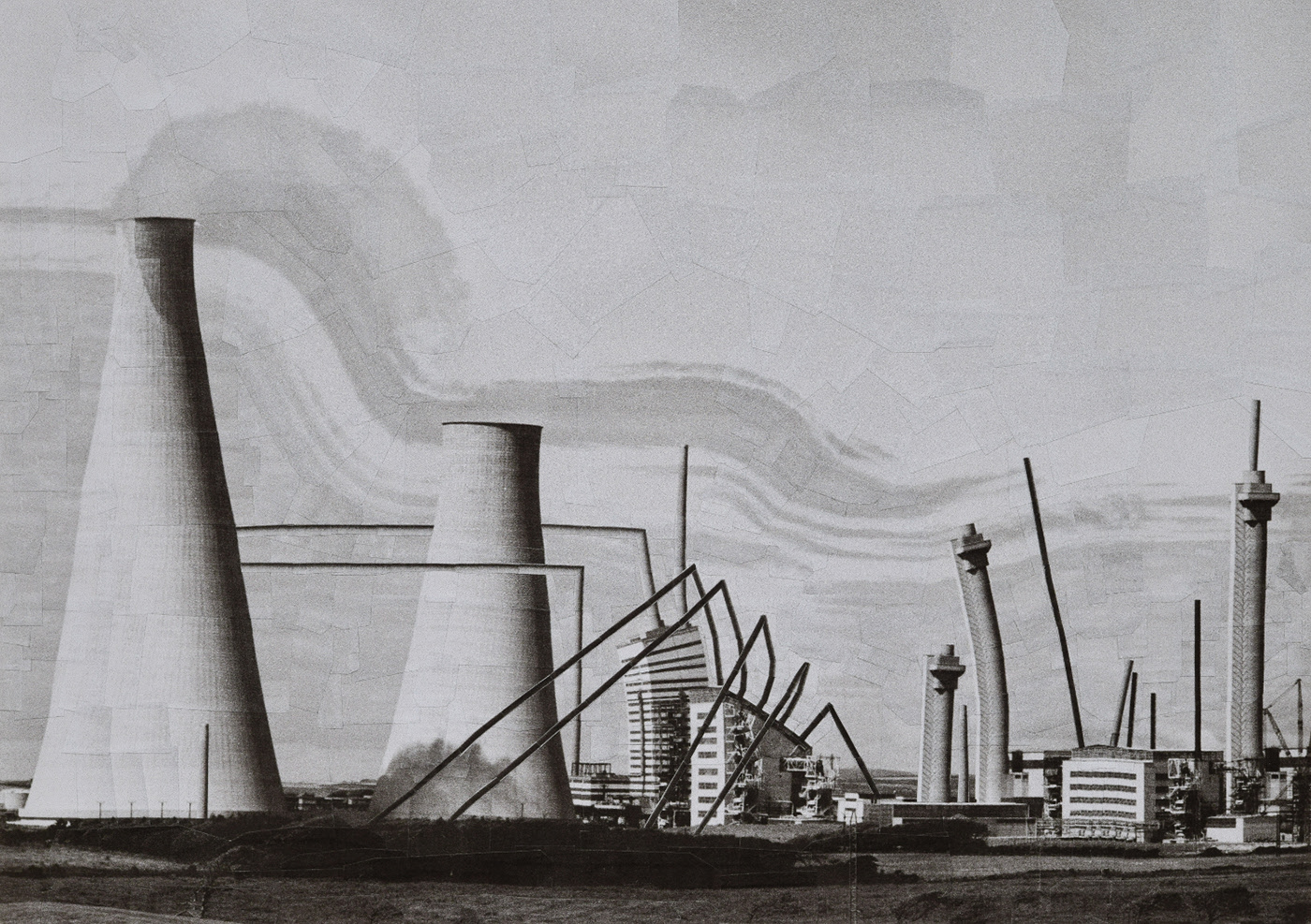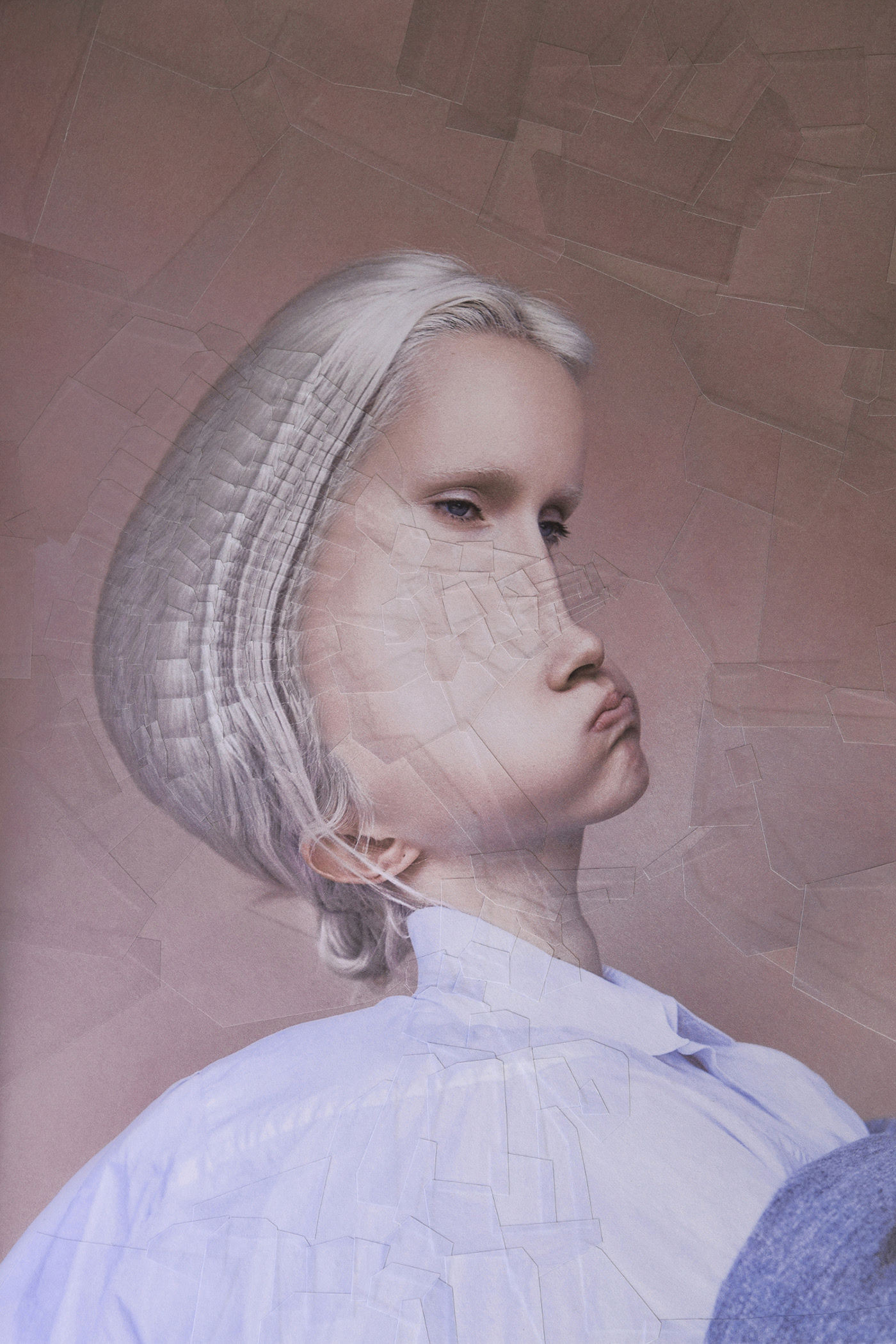In the current digital world, Lola Dupré’s collage art screams rebellion and provocation. We recently had the great opportunity to interview her and get a better understanding of her origins, influences and creative process.
First of all, we’d like to know how you are doing these days with the current odd situation. We guess it has affected your creative work in many ways, but is there any positive aspect you extract from this?
Yes it is a strange time for sure, the biggest change for me is maybe an obvious thing. I am traveling much less. I never really enjoyed short holidays, I always wanted to stay longer in places. But anyway, now I go to less events, less everything. These days we only go walking in the forest or by the sea. Its definitely strange to see the world change so much over just one year, and for us the change might seem small because we live in the
countryside and not in the city. I was happy to see less planes in the sky, to walk down the
middle of the road and see no cars and to see wildlife emerging from the shadows. Not so happy to think about what the longer term consequences are for humanity.
This year I have found the time to start a little habit of doing ten minutes of meditation every day, something which I think has been very beneficial to the health of my body and mind. Also I have dived into my interest in the sciences, I have listened to so many fascinating physics, biology, tech, archaeology podcasts while I work.
It has been great to separate from the endless Covid doom. I try to learn new things relating to all the sciences. If there is some kind of collective intelligence, which I think there must be, then if we can we should participate in this collective progress of our world. Now with information and knowledge so accessible, it is like a hand stretched out to you.
I digress, the whole thing has a million faces each singing a different song. How it affects my creative work is the same as how it affects myself generally speaking.
Looking at your collage art one can clearly see an influence of Dadaism, a movement that carried a strong feeling of protest and political fight. Not only from the aesthetic point of view, but also when it comes to certain subjects such as war or why not, also nuclear energy. Where does this influence come from?
I think I always had a rebellious side to my character, I was always outspoken, questioning
and criticizing. I was exposed to a lot of art, literature and video nasties when I was
growing up. I think it nurtured in me a strong attraction to things on the edge of popular
culture. I am always moving around between subjects and interests, specialization is for
insects right? I love the Dada aesthetic because of the quick and shocking juxtaposition of
images. The accessibility. The practical relevance of it.

We would like to go back in time to your first collages. Could you share with us how you got interested in this technique and what were your first subjects?
It kind of started by accident really, I lived for a while in Switzerland, and one day I picked
up a stack of ten or so free fashion magazines. I wanted to incorporate the models and
garments into the pen drawings and water colour sketches I was creating at the time in
some sketch books. Because I had multiple copies of every photo I soon made some little
collages where I had ten necks to make one long neck, or an extra leg or two to add
coming out from under a dress. Now sometimes I am working with hundreds or thousands
of pieces of paper in one collage. Collage always seemed so intuitive and easy, at least
compared to painting or drawing. Subjects find you with collage, our visual world unfolds
before us and we react to it. My first subjects were fashion and art history images I think.

Your Political Portraiture series is really fascinating. In a world where information has almost no barriers, and given that your work is widely published, are you aware if any of these politicians has seen your portrait and if so, what was their reaction?
Thank you, yes information has no barriers, and I think for these politicians when you take
such public responsibilities you have to be open to every criticism and caricature.
I think most if not all of them are rotten and spineless, either corrupted by the rancid
system they work in or born already putrid.
I have never received any feedback about it from the politicians, so I assume they have
never been seen! I think they would probably not give it a second thought.

We can easily picture you surrounded by photos, paper cuts and scissors at your studio. But could you describe your whole creative process for us?
I used to work like this. In a mess of paper, paper cuts all over the floor, sometimes cm’s
deep. Paper offcuts stuck in spider webs in the corners, photos on top of photos on top of
photos on top of paper cuts.
Now I am brutally tidy, I work and make a little mess and then I tidy everything away. I like a minimal and clean work space. For the surgery of deconstructing the images I am
working with I think a tidy workspace helps. I like my work table to have nothing on it
before I start working. A table is not a shelf, it should be empty. I just keep a small pile of
confetti like pieces hanging around, because I like the accidental shapes that form when
you move them, like tea leaves in a glass.
When I begin working, I have printed a few copies of something to play with, I cut the
essential areas, and start moving them around on a panel, trying to find that place half way between the image in my head and the image that makes itself in front of me.
Thanks a lot Lola for joining us!
Explore more about Lola Dupré and her art on her website.
